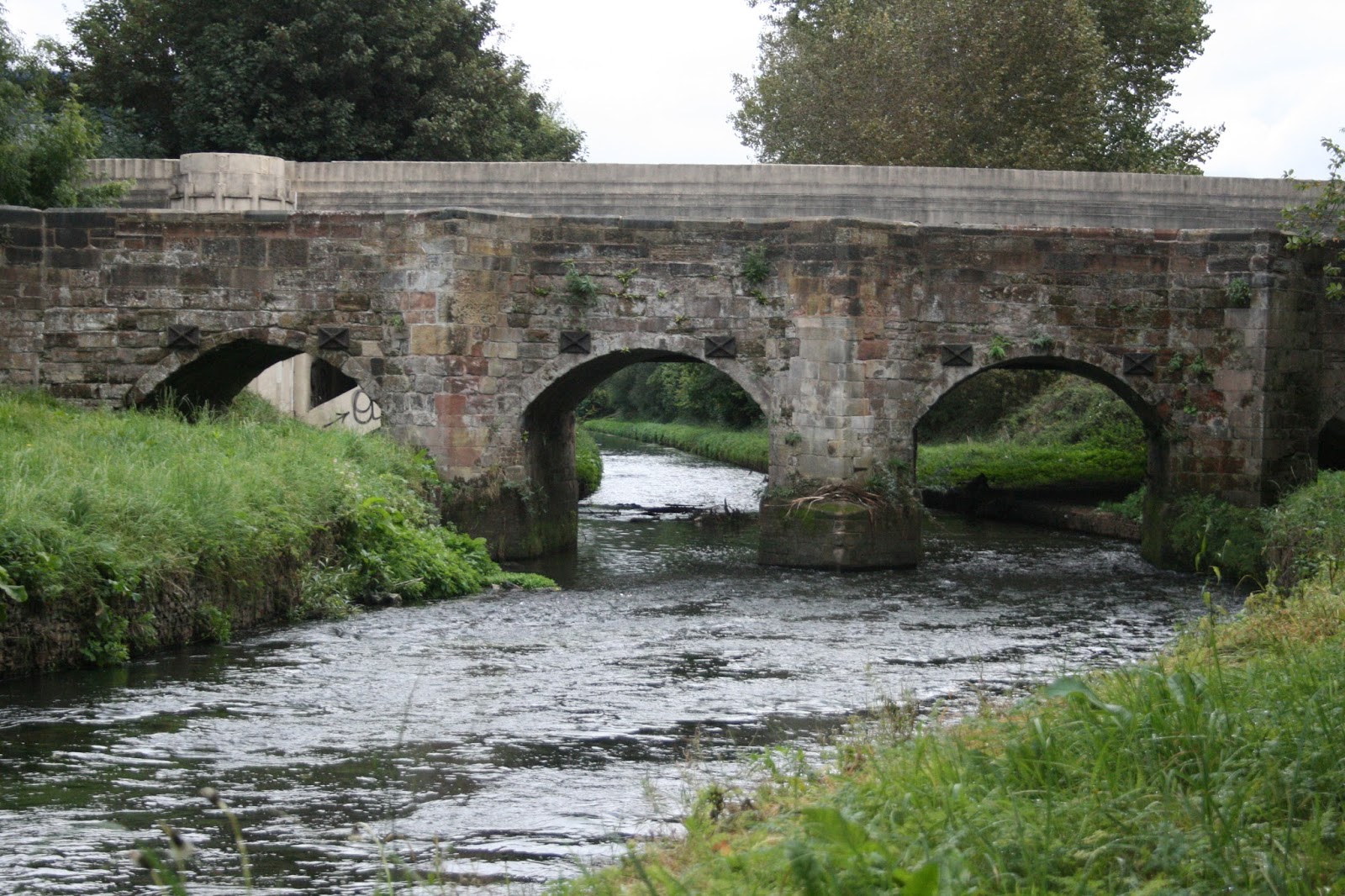 |
| The caves on the River Tame, also known as the Dwarf-holes, c. 1895 by Benjamin Stone. The caves were removed in the 1960s when Spaghetti Junction was built. |
Salford is an ancient crossing of the River Tame which is situated almost immediately under Spaghetti Junction. The word ‘ford’ means crossing and the word ‘sal’ has been transformed from ‘scraet’ or ‘scraf’ meaning caves, and there were indeed caves here until Spaghetti Junction was built (see image above). So this is the crossing by the caves; the caves were first mentioned in the late 1400s, and at the time were called ‘Dwerffeholes’. There is also a brook that joins the river here called Hawthorn Brook, which is difficult to find as it now mainly flows underground, but traces of it can be discovered along the Tame Valley canal nearby. Hawthorn was a healing tree in ancient traditions, so the caves could possibly have had a mystical purpose with people leaving tokens inside, but their original use is long forgotten, so this is just speculation. What is known is that the caves were used in World War II to shelter from bombing, and the area around was heavily bombed due to the many industries all around that made weaponry and machinery.
The reason that there was a crossing here was that the ground was gravelly, which made it easier for horses and carts to get across the river, and the gravelly nature of the ground is why the nearby area is called Gravelly Hill. Eventually a wooden bridge was built, first mentioned in 1290; in 1538 a traveller called John Leland noted that a new stone bridge had been erected; he states: “A mile beyond Bremischam [Birmingham] I passyd over Sharford-bridge of 4. arches of stone. Tame river goythe under this bridge […]. There be faire medows about Sharford-bridge”. The scene today, with the long concrete legs of Spaghetti Junction towering up to the curving roads, is a long way off the ‘fair meadows’ of the 1500s.
This bridge was abandoned over 200 years ago and a new one was built a little further downstream, and called Salford Bridge. The old bridge, neglected, slowly crumbled away, and anything that may have remained, would have been removed when Spaghetti Junction was built.
 |
| Spaghetti Junction being built in the late 1960s. The River Tame is just visible to the right. |
The old Salford or Scraford is today where Spaghetti Junction rises, which is the nickname for what is formally called the Gravelly Hill Interchange. It was opened on 24th May 1972 and is a complex entwining of roads, so much so that one of the men who helped build it, Les Smith, got lost when he first used it! Les is very proud as being part of the building of Spaghetti Junction: “It was something brand new, it was like giving you a Christmas present….you know you are building something that is going to be worthwhile…..it’s world famous now, I mean, you see it on the television…..something I can pass down to my children…..grandchildren”. He also remembers how they tried to divert the River Tame, but that it “didn’t want to be diverted, it broke its bank a few times, went back to its original form”.
As you walk near Spaghetti Junction you will notice a lake on the other side of the River Tame, known as Salford Lake. This is possibly the oldest reservoir for drinking water built in Great Britain, and was part of the Birmingham Street Commissioners proposals to get clean drinking water into Birmingham in the 1830s. Both the River Tame and Hawthorn Brook were utilised, and further north the lake in Brookvale Park and Upper Witton Lake are traces of the scheme along the Hawthorn Brook. Many years ago Salford Lake was used for motorboat racing, and the park around for an annual festival with rides and fireworks.
 |
| A brand new Spaghetti Junction in the early 1970s. |





















































